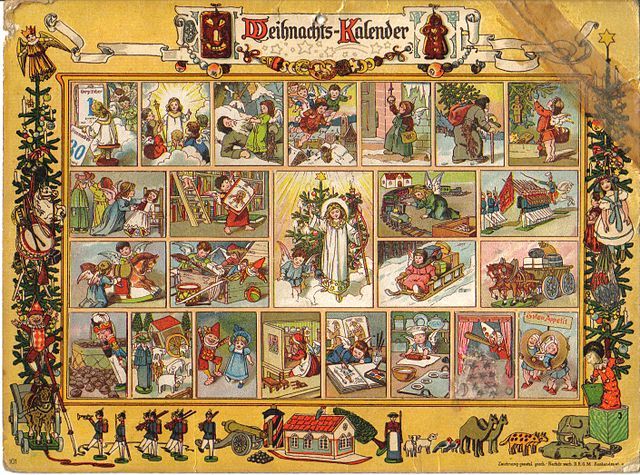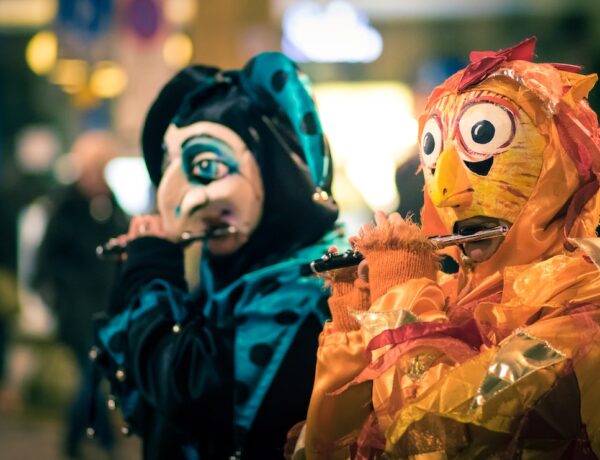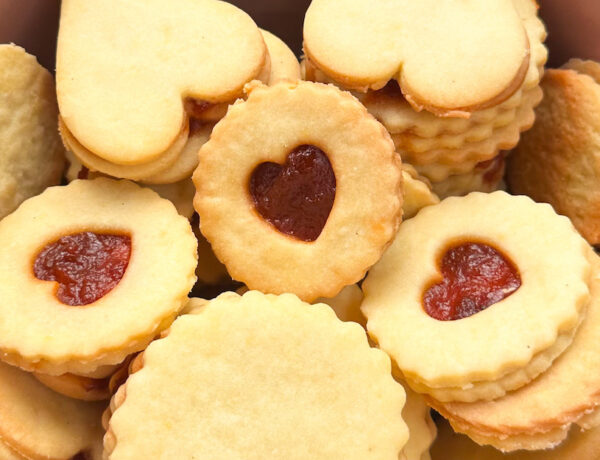Probably everybody knows that in English-speaking countries Santa Claus brings presents at Christmas. Meanwhile, Santa Claus arrives in southern Germany, Austria, and Hungary on 6 December, and the Christ child and/or the angels on 24 December. But what about Switzerland? Who should we expect and when? What are the Christmas traditions in Switzerland? In today’s post, I’ve looked into this mystery.
1. Traditions in German-speaking cantons of Switzerland
2. The French-speaking Switzerland
3. The Italian part, Ticino
4. What are the reasons for the differences?

When I first told my husband’s family that in Hungary the Christ Child (in our family with significant help from angels) brings presents at Christmas, they were staring at me like I was crazy. They didn’t really understand how come it wasn’t a grown man with grey hair delivering presents, but a baby. (Because how else would you say “Christkind or Jézuska” in English if not “baby Jesus” 😀 So the confusion might have been my fault too. ) Meanwhile, I was also surprised because I thought that, like in Austria and southern Germany, they also had the Christ Child bringing the presents. So actually I didn’t understand what they didn’t understand. I was both right and wrong. The Christmas gift-giving traditions in Switzerland vary as much from region to region as so much else.
Christmas traditions in German-speaking cantons of Switzerland
Based on the sources I found online, Swiss German customs seem to be very similar to Hungarian Christmas traditions. But in reality, Christmas traditions in Switzerland are a little more complex than that. According to my online sources, in German-speaking areas of Switzerland, the Christ Child brings presents on Christmas Eve. And on 6 December, Samichlaus (similar to Saint Nicholas or Santa Claus) arrives with all the good stuff: mostly tangerines, hazelnuts, and of course lots and lots of chocolate.
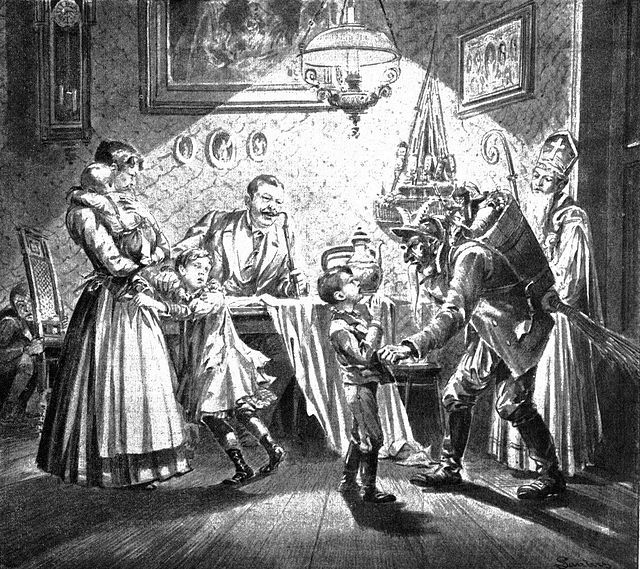
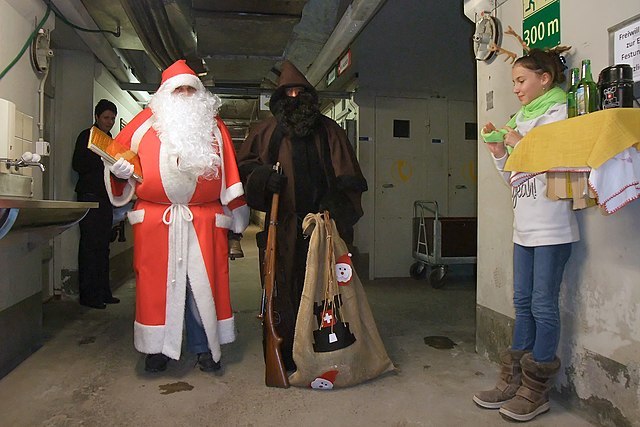
Interestingly, Santa Claus has a companion called Schmutzli or Butzli, who reminds me very much of the Hungarian Krampus. The difference is perhaps that the Schmutzli or Butzli doesn’t just give the bad kids coal or birch sticks. He grabs them and stuffs them in his sack, and takes them away. Somehow it seems to me a greater motivation to keep the children from being naughty than some coal or golden painted tree branches (virgács in Hungarian). In any case, Swiss children can “escape” even at the last minute by singing something nice or reciting a poem to Samichlaus. Pretty simple, isn’t it? At least according to German-language sources on the internet. But at this point, I started to get suspicious and did a little survey among my friends from German-speaking cantons of Switzerland. And this is where the confusion begins.
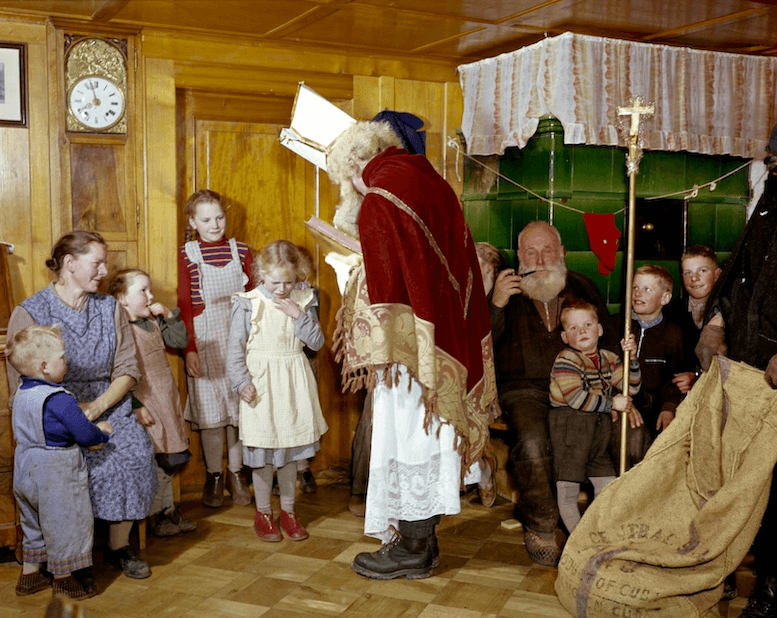
Based on conversations with my friends, the situation is far from clear and simple. It is absolutely not true that they get presents from the Christ Child on Christmas Eve and from Santa Claus on the 6th of December. For example, for many, a Santa-like figure arrives twice. One of them is often called Samichlaus, who presents children with little treats on 6 December (typically in kindergartens and workplaces), while Father Christmas visits kids on 24 December. In Lucerne, for instance, Samichlaus resembles a bishop (i.e. St Nicholas), while in Zurich he looks more like Santa Claus. But nobody seems to care at all about different Christmas traditions in Switzerland. The point is that each variation brings some present.
Christmas in French-speaking Switzerland
In French-speaking areas – the northwest of the country – there is also a Santa-like figure. His name is Saint Nicolas, and he surprises kids with small treats on 6 December. Meanwhile, on 24 December, Père Noël aka Father Christmas brings the presents, and in my opinion, he bears a striking resemblance to Santa Claus. I tried to figure out the difference between the two of them, but even my friends from the French region couldn’t really explain the difference. So let’s accept that two very similar figures visit these cantons with gifts of different sizes at two different times.
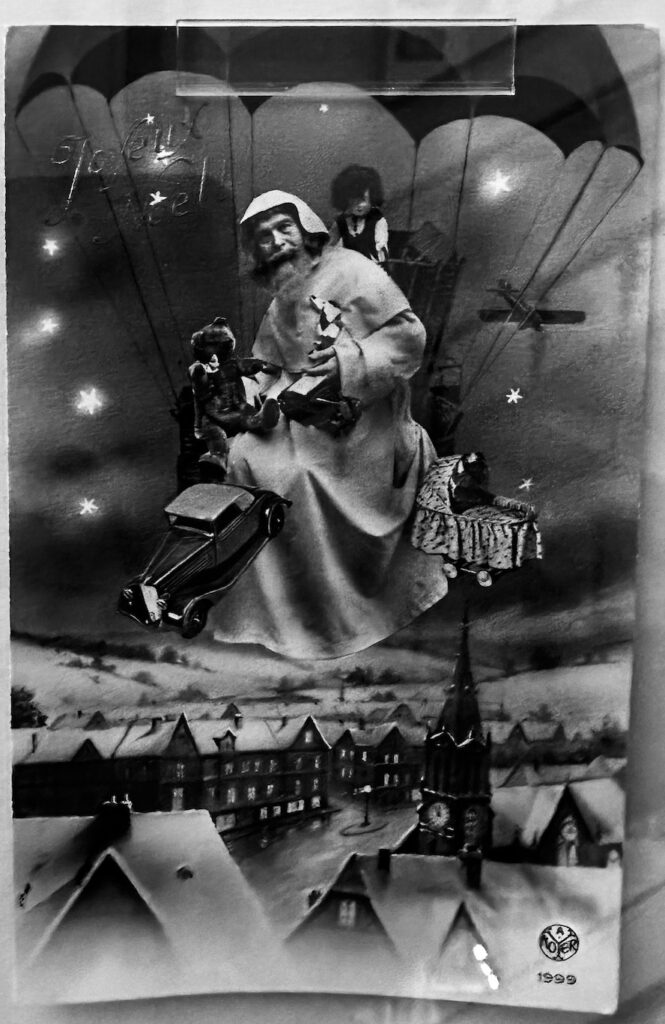
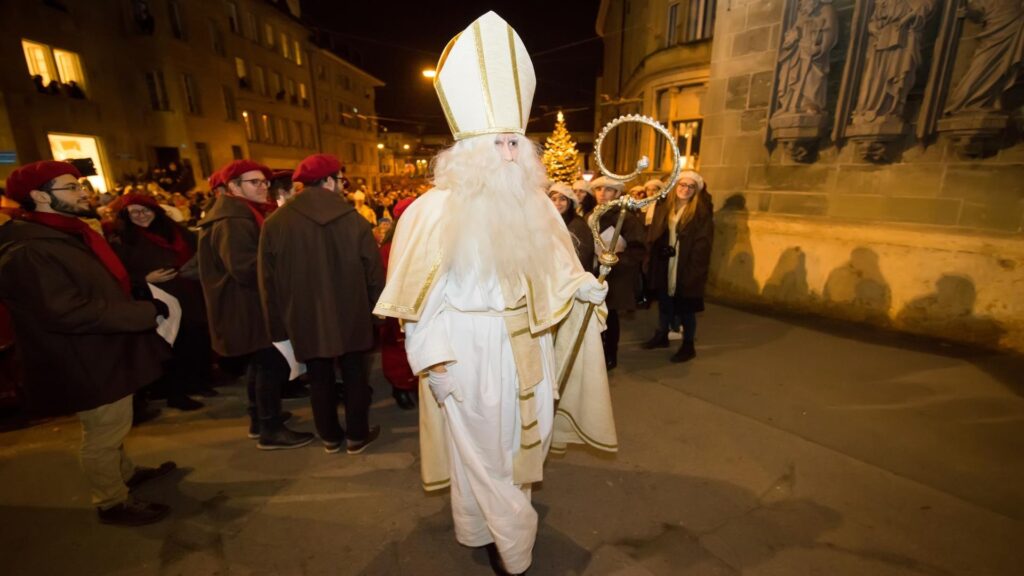
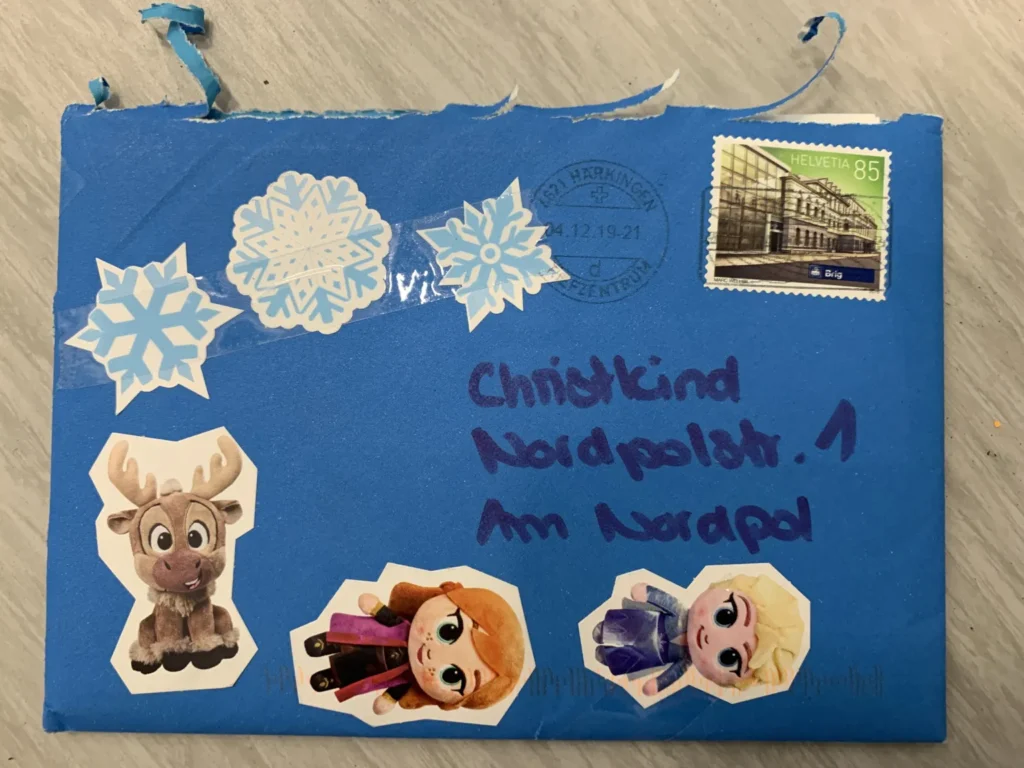
In Fribourg, for example, there is an old tradition of celebrating Saint Nicolas, who is also the patron saint of the city’s cathedral. On the first Saturday of December, St Nicholas sets off from St Michael’s College to bring presents to local children. Similar to the German part, he has a sinister sideckick, called Père Fouettard, who punishes bad children by whipping them with a broom of twigs. (Yes, by whipping them, super weird 😀 ) At the end of the parade, Santa Claus will give a speech on the balcony of the cathedral. Another interesting fact is that, according to the Swiss Post, they receive most letters at Christmas (almost 58% of all letters) addressed to Père Noël from the French-speaking part of the country. This is hardly surprising since this is the region from where the tradition comes that children send letters and wish lists to Santa Claus (or in this case to Père Noël), decorated with pictures and good wishes.
The Italian part, Ticino
Not surprisingly, Christmas traditions in the Italian part of Switzerland, so in Ticino are mostly influenced by Italian customs. On the evening of 24 December, there are small parades and nativity scenes in many places. At night, families often attend midnight mass. Accordingly, the gift-giving ceremony takes place on the morning of 25 December. The presents are brought by Babbo Natale or Gesù Bambino. Therefore, I guess that the Babbo Natale or Gesù Bambino might be travelling around the countryside at the same time as Santa Claus in the American tradition, so from 24 to 25 December. The Pranzo di Natale, or Christmas feast, also takes place on 25 December. The Panettone, or Christmas bread, is an essential part of the festive table, a fruit loaf with raisins and candied fruit.
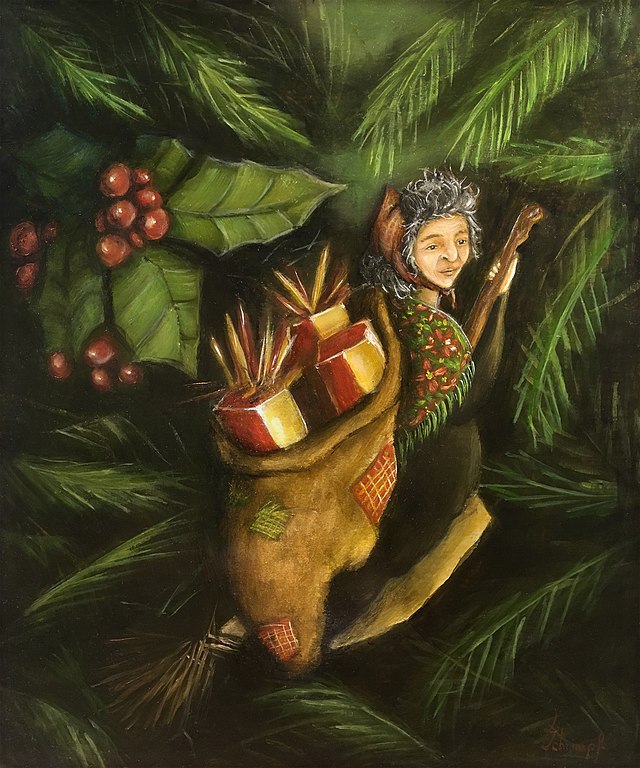
These customs may not seem very special or strange, but the Swiss Italians also have a very interesting tradition. On 6 January, Befana, an ugly but well-meaning witch visits the children of the canton of Ticino. She arrives with little presents much like Santa Claus. Befana is a major figure in Italian folklore. According to legend, Befana learned of the birth of Jesus along with the shepherds and they were supposed to visit the Christ Child together. However, the shepherds eventually set off without her, because Befana wanted to dress up for the occasion and was taking too long to get ready. So she needed to search for the Christ Child alone. According to the legend, she followed the same star, yet was unable to locate the child. Befana has been wandering the countryside ever since, dropping presents down every chimney to kids hoping that the Christ Child is one of them. Some sources say this is the origin of the custom of children hanging shoes or socks under the chimney or fireplace.
What are the reasons for the differences?
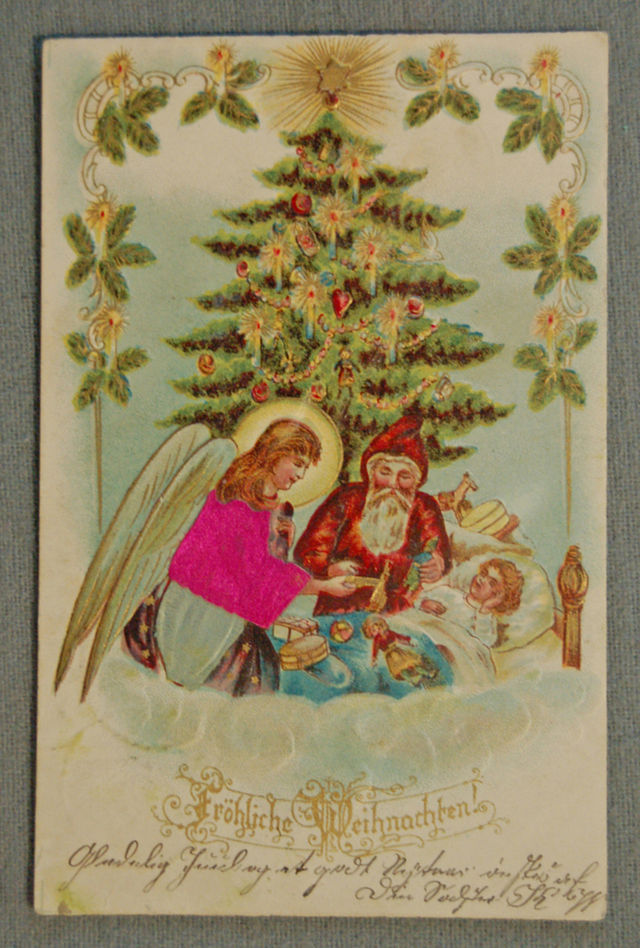
The answer is actually quite simple. The differences are due to different cultural and religious characteristics. Christmas traditions in Switzerland were very different before the Reformation. For example, kids were only given presents on the 6 of December. This day was called Samichlausentag (Santa Claus Day) when Saint Nicholas brought small presents for the good children. At that time, Christmas was still a strictly religious holiday and therefore there were no presents. Later, as the Reformation rejected worshiping saints, including St Nicholas, the gift-giving was moved to the birthday of Jesus Christ. From there, it’s just a hop, skip, and a jump, and this is how the figure of Jesus as the gift-giver was born. Today, however, due to globalisation and consumerism, the figure of the Christ Child is being increasingly replaced by Santa Claus.
If I’ve left anyone out of the above list, or if you’re celebrating Christmas in a completely different way, let me know via the contact form, in the comments, or on Instagram.
Források:
https://www.tagesanzeiger.ch/das-christkind-koennte-verschwinden-574824067973
https://blog.nationalmuseum.ch/2019/12/christkind-oder-samichlaus/
https://www.auswandern-schweiz.net/blog/345-so-feiert-die-schweiz-weihnachten
https://www.zuerichfamilie.ch/N98390/samichlaus-weihnachtsmann-oder-christkind.html
https://www.nzz.ch/befana-und-panettone-ld.832546
https://seniorweb.ch/2021/12/04/woher-kommt-eigentlich-der-weihnachtsmann/
https://post-medien.ch/fr/quand-le-pere-noel-trouve-de-laide-a-cadenazzo/
https://baernerbaer.ch/thema/steve-von-bergen-und-simon-moser-spielen-schon-mal-samichlous/
https://www.csmfr.ch/www-de/Rund-um-die-Schule/Sankt-Nikolaus
https://www.st-nicolas.ch/de/la-saint-nicolas/rede
https://www.fribourgregion.ch/de/freiburg/veranstaltungen/sankt-nikolaus-feier/

